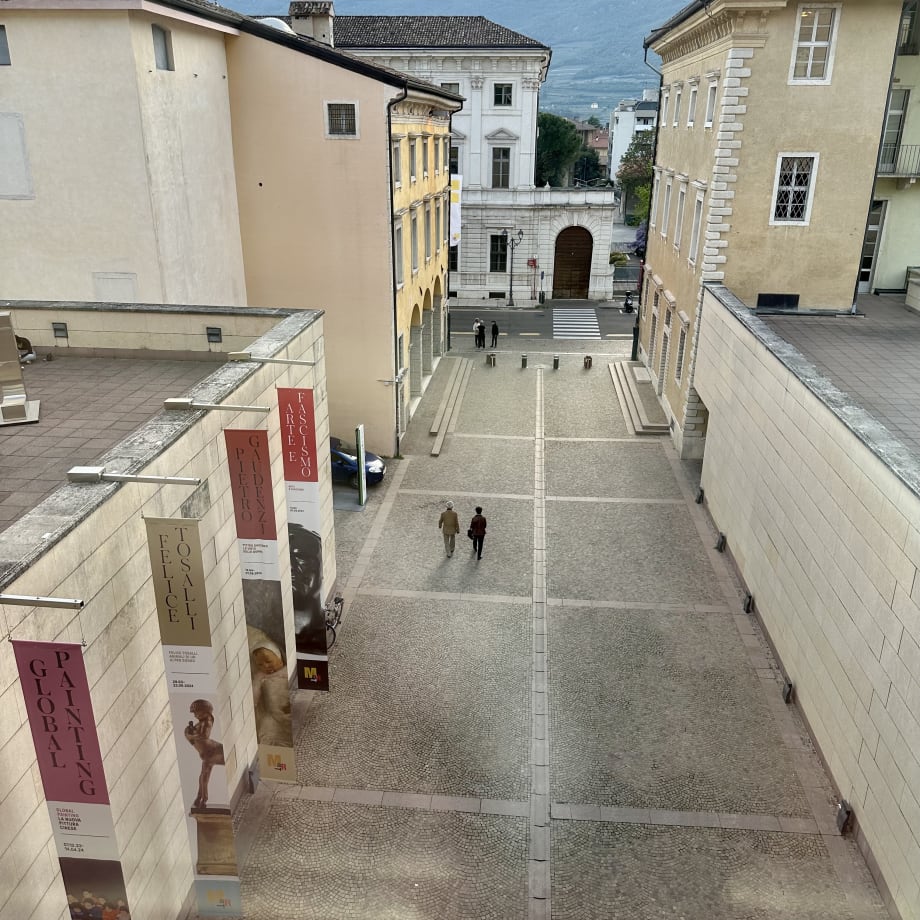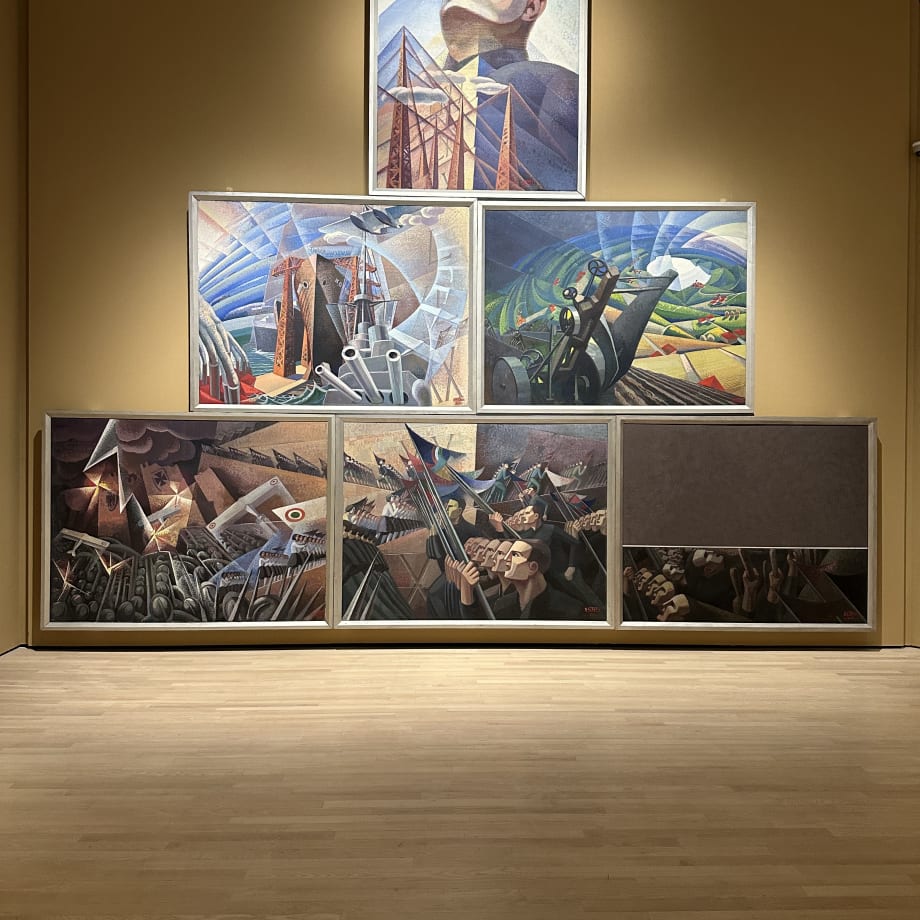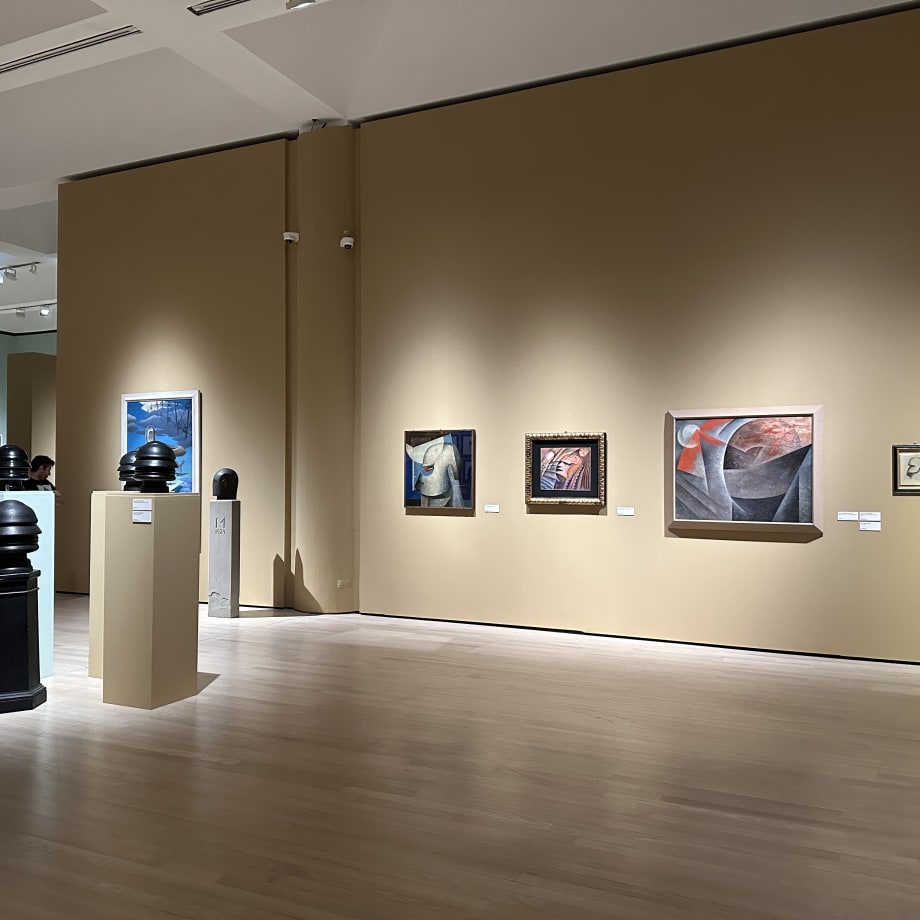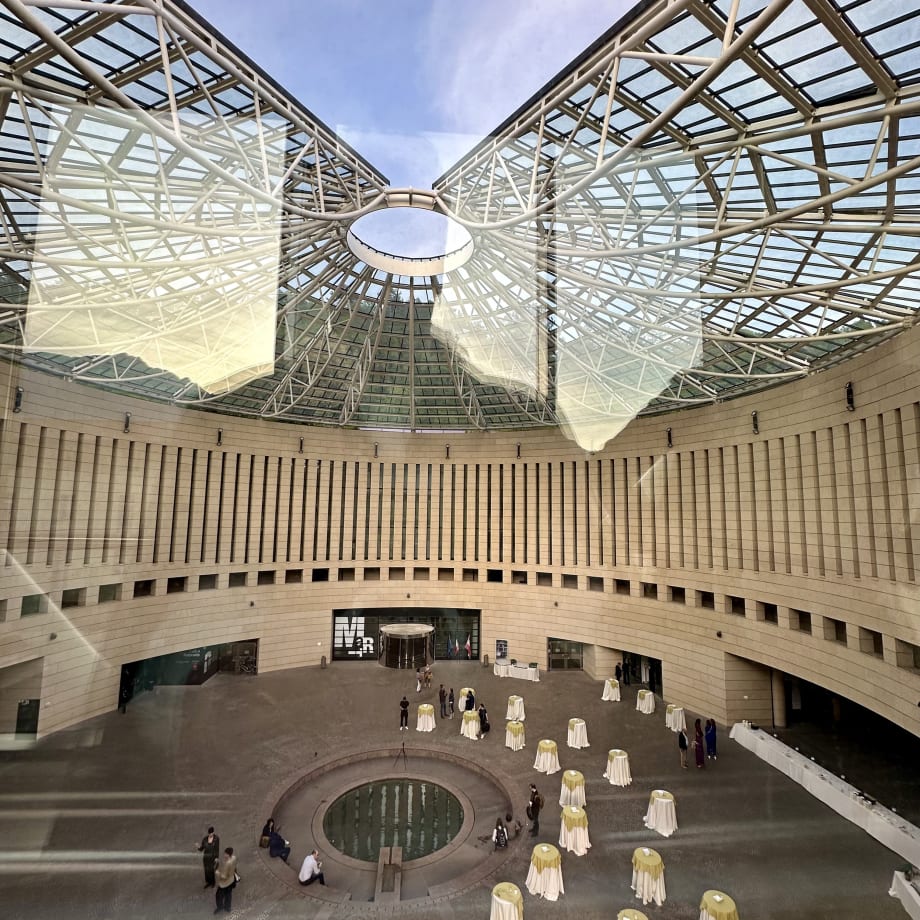The exhibition "Art and Fascism" analyzes the various and complex ways in which the fascist regime influenced Italian figurative production, using the languages of art and architecture for propagandistic purposes.
Rooted in the decades preceding it and ranging from traditional practices to applied arts, the visual culture of the Fascist Ventennio (twenty-year period) bears witness to the development of a variety of unprecedented styles. Unlike other regimes, the fascist one does not impose a single taste, adopting even some of the artistic trends that emerge during that historical period. The lack of a singular orientation facilitates the development of a heterogeneous and dynamic presence of expressions and currents. Alongside the persistence of avant-garde research linked to Futurism, a line of "return to order" emerges, converging into the movement of Italian Novecento, created by Margherita Sarfatti. The return to antiquity, functional to the affirmation of Italian tradition, finds various declinations, from the renewed gaze at ancient masters by the protagonists of Novecento to more radical affirmations of propaganda art aimed at building consensus.
The model of a renewed harmony between tradition and modernity enjoys consensus from the regime, in search of defining an organized system of the arts. An extraordinary apparatus of awards, public exhibitions, conventions, and shows allows the regime to intercept the most significant artists, support their work, and incorporate them into the broader project of general promotion. Through participation in biennials, quadrennials, union exhibitions, competitions, and public commissions, artists give voice to the ideology, themes, and myths of fascism.
The relationship between artists and power itself is neither defined nor unique. Alongside openly fascist figures, convinced supporters of the Duce like Depero and Sironi, there are artists less engaged, more or less distant but still present in the rich Italian panorama. At the same time, the new sites of power become instruments of affirmation through a language open to classicism as well as rationalism, involving architecture, sculpture, and mural art, revived under the impetus of a renewed celebratory will.
Between painting, sculpture, documents, and archival materials, the exhibition path winds through 400 works by artists and architects such as Mario Sironi, Carlo Carrà, Adolfo Wildt, Arturo Martini, Marino Marini, Massimo Campigli, Achille Funi, Fortunato Depero, Tullio Crali, Thayaht, Renato Bertelli, and Renato Guttuso. Coming from public and private collections, the works dialogue with some of the great masterpieces of the Mart (Museum of Modern and Contemporary Art of Trento and Rovereto) and with numerous materials from the Archives of the '900.
Eight chronological and thematic sections mark the visit: Italian Novecento, dedicated to Margherita Sarfatti's grand project of supporting artists and culture; The image of power, on the iconography of the Duce between celebration of the leader and spread of the myth; Futurism. Celebrating action, the total art of the major Italian avant-garde; Monumental art, education, and propaganda through grand mural art, mosaics, frescoes, decorations, and monuments; Architecture and its relationship with the arts, projects, sketches, and abstract art for grand buildings that exalted Italian power; New myths, not only the hero and the athlete, but also the worker, the woman, the family, in search of defining a virtuous social system; The system of the arts, the organization of state art through exhibitions, quadrennials, biennials, and competitions; The fall of the dictatorship, the end of an era between iconoclasm, satire, and drama. The exhibition design is by Baldessari and Baldessari.




